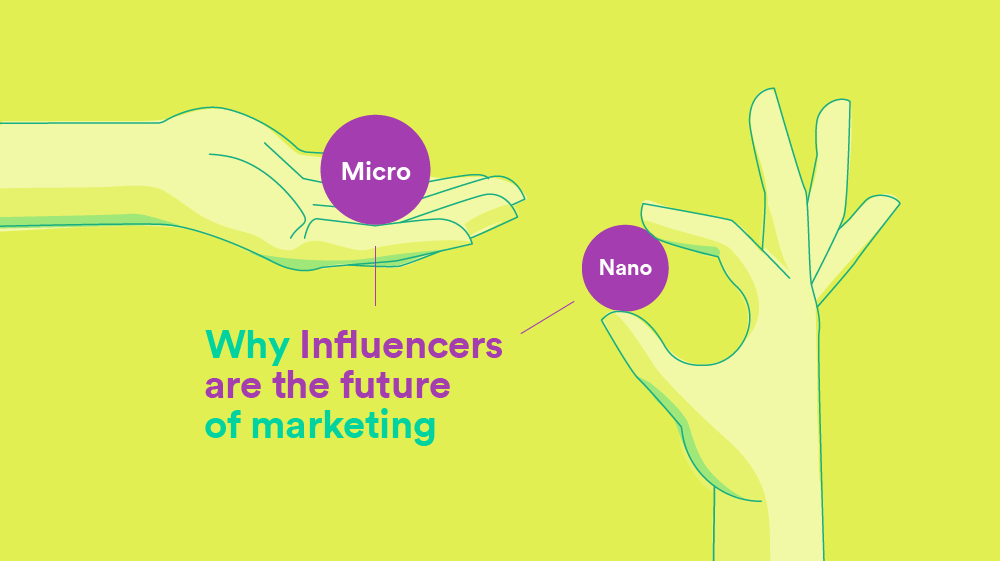The rise of the nano-influencer: How brands are turning to common people
For his book Mimesis, the German-Jewish literary critic Erich Auerbach undertook a grand survey of western literature from his wartime exile in Istanbul. He wanted to show that literature was becoming ever more democratic in its representation of reality, ever more attentive to the human individual. From Homer’s gods and monsters, we had moved through Shakespeare’s warriors and kings, to Austen’s ladies, Dickens’s merchants and Zola’s workers, down into Woolfian streams of consciousness. Here, at least, was a sort of moral progress to set against the darkness of the Third Reich.
Clearly there’s a similar dynamic at play in Instagram influencing – that signature 21st-century means of “representing reality” (to use an Auerbachian term). A few years ago, only celebrity demigods such as Rihanna were courted by brands for their coconut water endorsements on the photo-sharing platform. Soon it was the turn of more #relatable individuals such as the makeup vlogger Zoella and her YouTuber boyfriend Alfie Deyes, who built up multimillion-follower counts and now incessantly try to sell them things. “Big love to @visit.dubai for helping make the holiday happen!” Deyes captioned a recent selfie in the lift of a luxury hotel – part of a “paid partnership” with the afore-hashtagged.
Brands are cashing in on social media envy, and using influencers to sell it
More recently, marketers have turned to micro-influencers: more specialised and thus more trusted individuals, who might be persuaded – for a micro-fee – to become a “brand ambassador” for a vegan bacon startup, or share a post about an aspirational cuticle treatment. And now (according to the New York Times’s Sapna Maheshwari) we must welcome the nano-influencer. Perfectly ordinary digital citizens, with follower counts as low as 1,000, are being courted for their influence. The whole point is that they are not famous.
“Everyone who’s on Instagram has that friend who is just really popular and is racking up ‘likes’ and comments and has great content,” explained the chief executive of a “full-service influencer marketing agency”. “They’ve probably never worked with a brand before, but they’re just really good at social media.” So if your cool cousin starts posting improbably enthusiastic posts about cashew milk or face cream – that’s probably why.
It’s a logical progression, if you think about it. Ordinary people are much easier for brands to deal with than your Rihannas or Zoellas. Cheaper too: they don’t usually require cash, just some free product. What they lack in reach (typically, a “nano” will have 1,000 to 5,000 followers) they make up for in intimacy – or “real-time personalisation of the brand” as one influencer puts it. You’re far more likely to book a holiday on the suggestion of a discerning friend than some random celebrity. And these nanos really hustle! “I love challenging myself with how I can advertise and market something, and seeing the impact it has on people is really rewarding,” one recruit told the NYT.
It’s reaching even the most hapless poster: some leisurewear startup slid into my personal messages the other day promising me free sweatshirts in exchange for shameless promo … me with my three-figure follower count! (I immediately made my account private).
Lest you think I’m being a little high-handed, there has always been a large grey area in journalism where free stuff might be offered in the hope of coverage. How else could it all function? Theatre critics don’t usually get paid enough to pay for their own theatre tickets; travel editors certainly couldn’t afford five-star hotels; on fashion magazines, it is generally understood that free stuff partly compensates for inadequate wages at the bottom end (and increasingly at the middle and top end).
But the culture is becoming ever-more shameless. Spend any time on Instagram, and you won’t fail to note extravagant thank yous exchanged between editors and luxury brands. In an era of falling circulations and declining advertising revenues, the balance of power has shifted in the direction of marketing. For many publications – many individuals, too – influence and integrity are the most valuable commodities they have left to sell. Once it’s gone, it’s gone.
Likewise in the music industry record labels actively attempt to connect their artists with brands. It’s increasingly hard to draw the line between artistry and commerce. Frank Ocean, one of the most acclaimed songwriters of his generation, sings about Nikes and the Chanel logo. “I see both sides like Chanel / C on both sides like Chanel”: even his similes are luxury-branded!
In this sense, all the nano-influencers are doing is profiting from a wider democratisation of shamelessness. But does shame even come into it any more? No doubt a few thousand of Alfie Deyes’ followers will feel a little disgusted and betrayed every time he posts from his luxury suite in Dubai. But many more will admire him for his success and his honesty; for “laying bare the device”, as a literary critic might have it. For the nano-influencers, a paid post is not a slightly shameful thing: it’s a status symbol.
And so, following the Auerbach pattern, just as literature has “progressed” (if that’s the right word) to the remorseless itemisation of autofiction – we will soon move down through the pico-influencers to the zepto-influencers. Where next for marketeers? Animals? Birds? Chance arrangements of rocks and twigs that somehow bring about an insane craving for grapefruit flavour La Croix? Just as liberal democracy enshrines the sanctity of each individual, so digital capitalism will allow the individual to realise the material value of her impact on others. It might be a few cases of free craft beer. But it might be far, far more than you realise.
Article written by: Richard Godwin
0

